
On November 11, the Louvre Abu Dhabi opened on Saadiyat Island, a cultural district off the coast of the capital city of the United Arab Emirates. The museum was designed by the French architect Jean Nouvel and is the result of a €1 billion agreement between Abu Dhabi and France.
The project was announced in 2007 with a contract in which Abu Dhabi agreed to pay €400 million to use the Louvre brand name for a period of 30 years, and €574 million more for French expertise and loans. The Agence France-Muséums, which includes the Louvre and 16 other institutions, will lend up to 300 artworks during the next 10 years; develop four temporary exhibitions each year for 15 years; and provide management and support for 20 years. The deal also included a €25 million renovation of part of the Louvre’s Pavilion de l’Horologe. Beyond this €1 billion agreement, Abu Dhabi paid for the €600 million construction cost of the new museum.
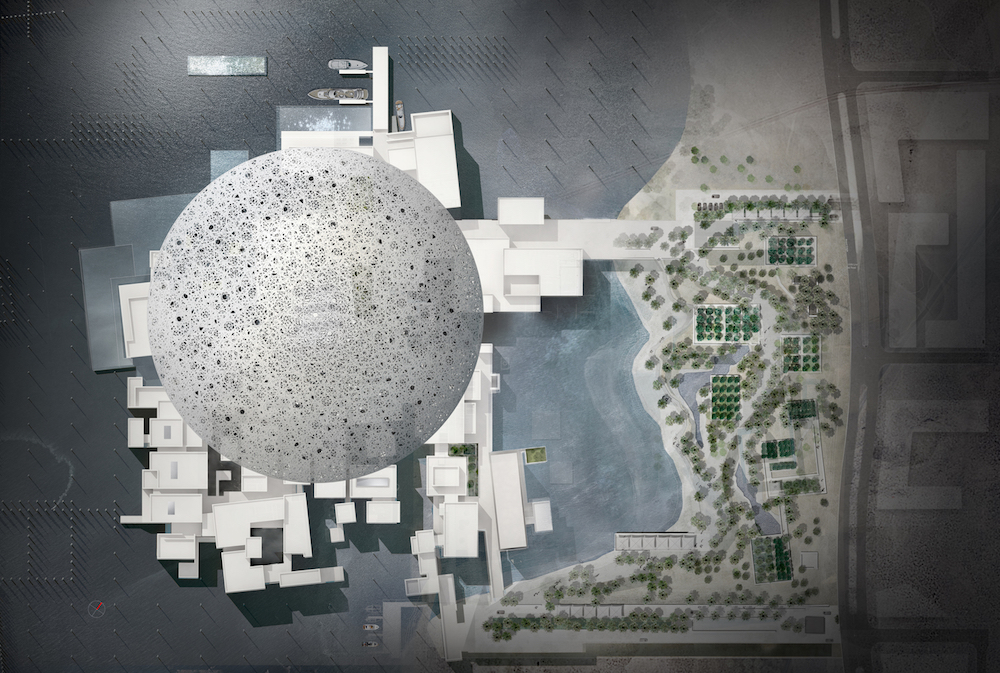
Jean Nouvel, whose other cultural projects include the Fondation Cartier, Musée du quai Branly, and Philharmonie de Paris, is especially suited for the Louvre Abu Dhabi. One of his best-known works is the Institut du Monde Arabe in Paris, a landmark building which established a French-Arab connection with Arabic design for a modern and international cultural institution. Nouvel has also designed the National Museum of Qatar, which is expected to open next year.
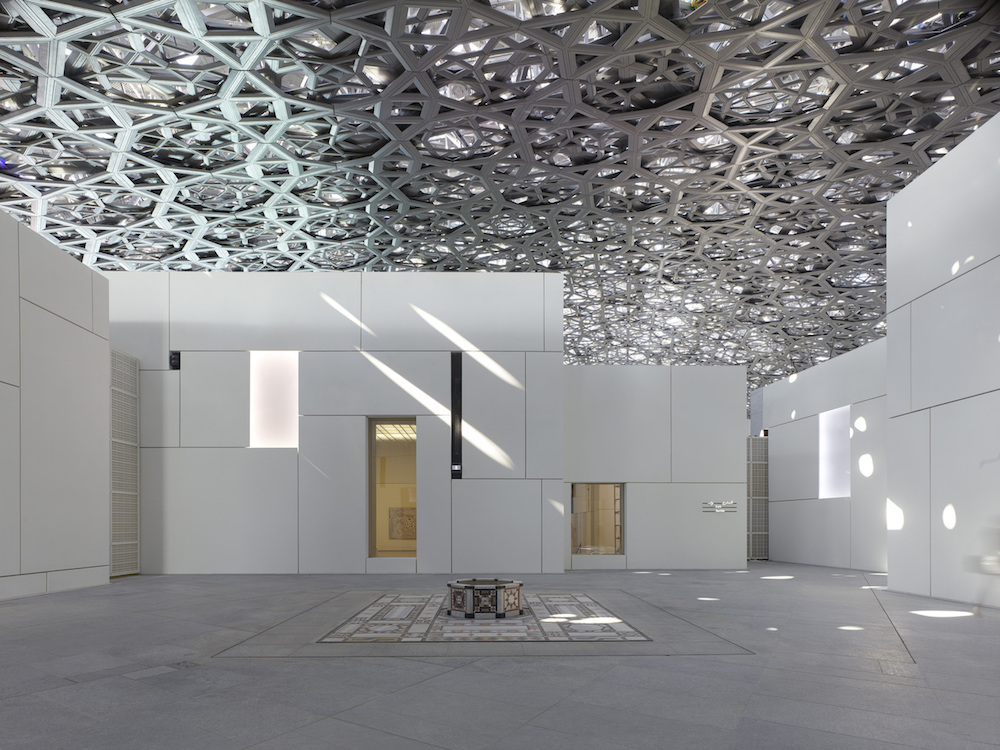
The 24,000-square-meter Louvre Abu Dhabi comprises 55 individual white gallery buildings arranged as a village on an archipelago in the Persian Gulf. The entire complex is sheltered by a vast dome structure that appears to float above the cluster of museum buildings. The 180-meter dome is supported by only four columns, which are hidden within buildings to create the floating effect. The dome weighs some 7,500 tons and consists of eight layers – four outer layers of stainless steel and four inner layers of aluminum separated by a five-meter steel frame.
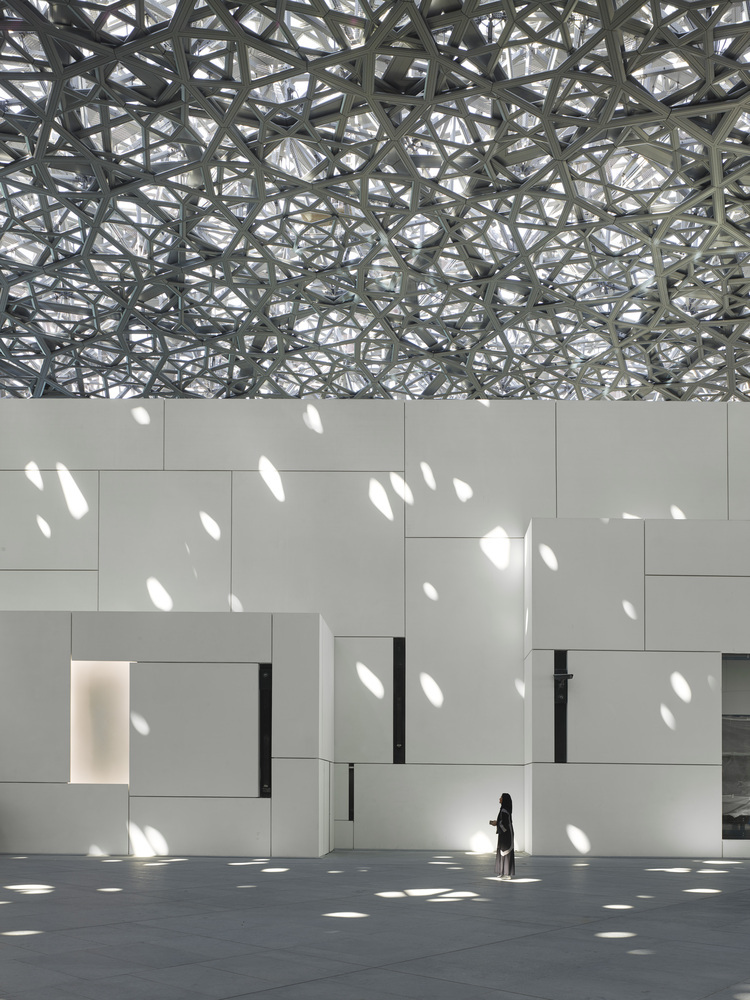
The dome is the project’s defining characteristic, and is inspired by cupolas and mashrabiya windows found in traditional Arabic architecture. Its complex pattern results from geometric designs that are repeated at various sizes and angles in each of the eight layers, forming 7,850 star shapes. As the sun passes through, dappled light provides an ever-changing effect named the “rain of light.” At night, the dome becomes like a constellation when it is illuminated from within.
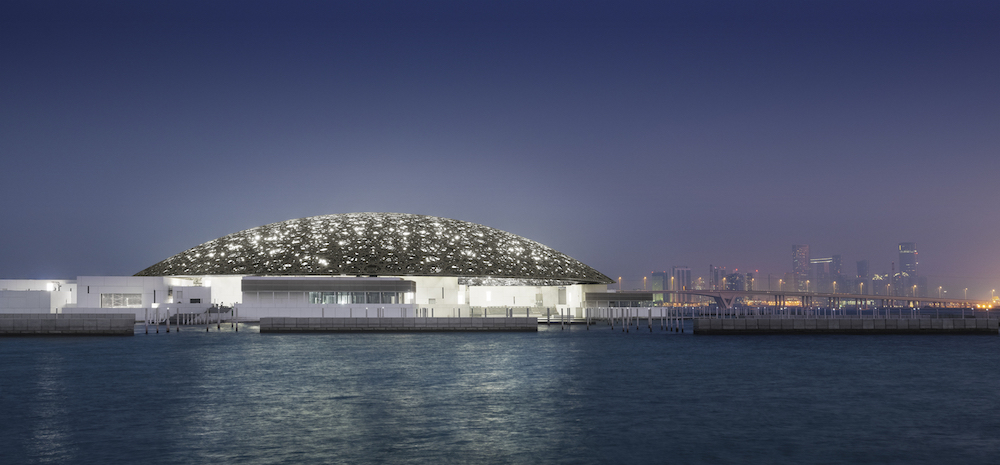
The Louvre Abu Dhabi has about 600 artworks in its own collection so far. The Agence France-Muséums has guided the acquisitions, but some early speculation was that the sheikhs might exclude nudity and non-Muslim religious art. However, a Bellini painting of the Madonna and Child, a Roman bronze of the Apollo Belvedere, and a Yemeni manuscript of the Hebrew Bible are among many works already on view that provide evidence to the contrary.
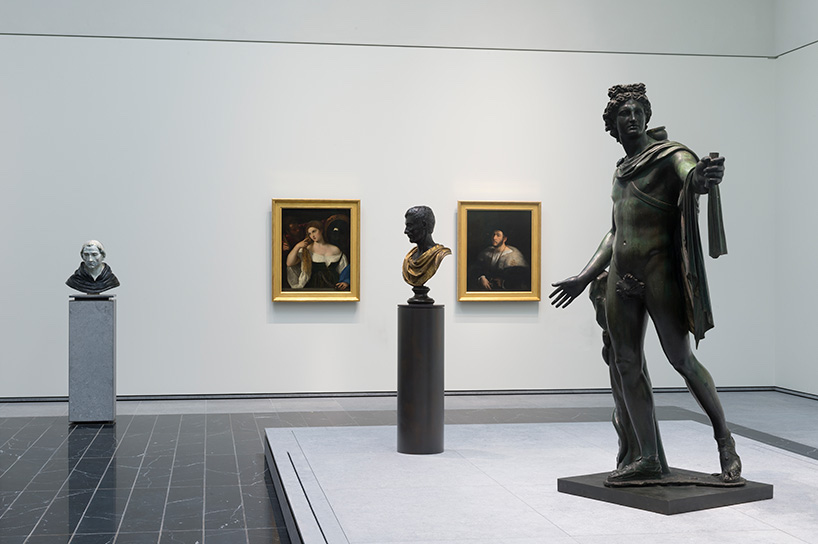
Unlike the Louvre in Paris, which does not collect, for example, American art or works created after 1850, the Louvre Abu Dhabi aims to be a universal museum with works from all places and periods, including contemporary art. Its inaugural exhibitions are described as twelve “chapters” that are curated thematically rather than by geography or chronology. Examples include Civilizations and Empires, A Modern World?, and A Global Stage, with works that range from a 2,700-year-old Grecian sphinx, to an Impressionist painting by Gustave Caillebotte, to a site-specific commissioned installation by Jenny Holzer.
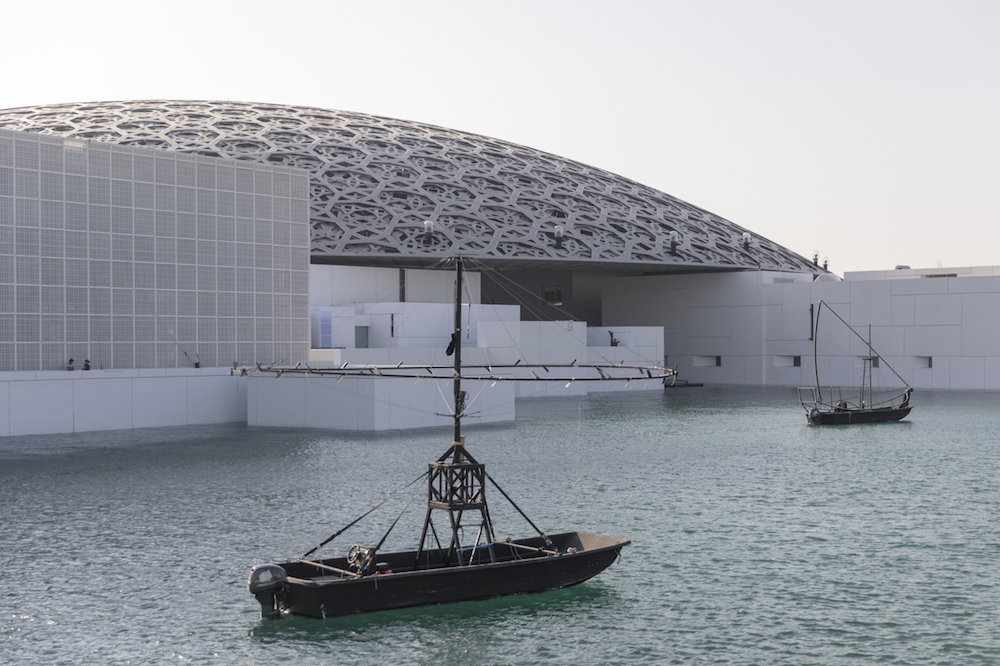
The Louvre Abu Dhabi is the first universal museum in the Arab world, the Louvre’s first international satellite, and the first museum to open on Saadiyat Island, a $27 billion development off the coast of Abu Dhabi. The island’s planned cultural district includes the Louvre, a maritime museum designed by Tadao Ando, the Zayed National Museum designed by Norman Foster, a performing arts center designed by Zaha Hadid, and a Guggenheim museum designed by Frank Gehry.
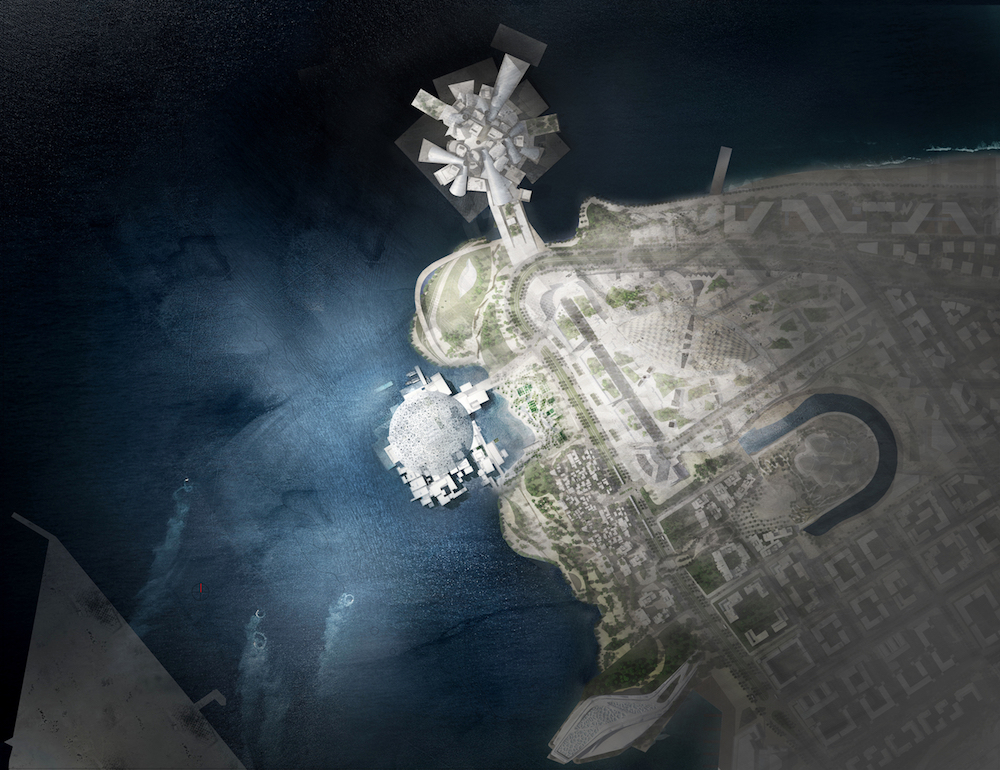
While the Guggenheim and Zayed National Museum show no signs of progress (the British Museum recently terminated its partnership with the Zayed National Museum as a result), Saadiyat Island does have a marina, luxury resorts and residential developments, a campus for New York University, and Manarat Al Saadiyat, a gallery complex. The emirate estimates that the island will be home to 150,000 people by 2020.

The UAE is a case study in modern economics, architecture, urbanization, and now, cultural development. The Louvre Abu Dhabi is the result of a unique international partnership described as “a new cultural beacon, bringing different cultures together to shine fresh light on the shared stories of humanity.” The museum, to say nothing of the larger ambition of Saadiyat Island, already changes perspectives and shifts the world’s cultural center of gravity further towards the East.
Louvre Abu Dhabi from The Art Newspaper.